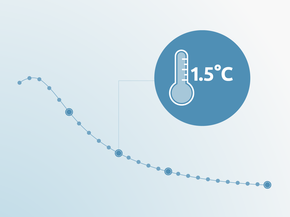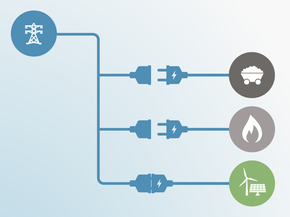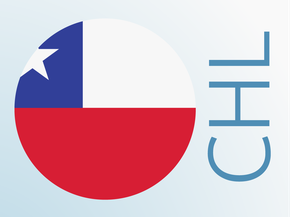Sources
List of references
- ADB. (2022). Nepal: Macroeconomic update (September 2022). https://www.adb.org/countries/nepal/economy
- Adhikari, M. (2022). Transforming Nepal’s energy system. The Annapurna Express. https://theannapurnaexpress.com/news/transforming-nepals-energy-system-30722
- Baral, B. D., & Thapa, K. (2021). Effect of the COVID-19 Lockdown on Ambient Air Quality in Major Cities of Nepal. Journal of Health and Pollution, 11(29). https://doi.org/10.5696/2156-9614-11.29.210211
- Bikram Timilsina. (2023). Post-COVID-19 Economic Conditions in Nepal and Political Instability. Australian Institute of International Affairs. https://www.internationalaffairs.org.au/australianoutlook/post-covid-19-economic-conditions-in-nepal-and-political-instability/
- CEN. (2020). Nationally Determined Contribution (NDC) implementation in Nepal: A Pathway towards Climate Friendly Development. http://cen.org.np
- CIAT; World Bank; CCAFS and LI-BIRD. (2017). Climate-Smart Agriculture in Nepal. https://ccafs.cgiar.org/publications/climate-smart-agriculture-nepal#.XcKMyjNKiUl
- Climate Analytics. (2021). What is Nepalʼs pathway to limit global warming to 1.5°C? https://1p5ndc-pathways.climateanalytics.org/countries/nepal/#fn5
- EPA. (2019). Global Non-CO2 Greenhouse Gas Emission Projections & Mitigation Potential: 2015-2050. https://www.epa.gov/global-mitigation-non-co2-greenhouse-gases/global-non-co2-greenhouse-gas-emission-projections
- European Union. (2022). Building Energy Efficiency in Nepal (BEEN). https://www.switch-asia.eu/project/building-energy-efficiency-in-nepal-been/
- Foreign Policy. (2022). Nepal’s Big EV Bet. https://foreignpolicy.com/2022/06/25/nepal-ev-electric-vehicles-environmental-policy-traffic-congestion-roads-industry/
- GEF News. (2020, January 20). Government of Nepal launches new Integrated Landscape Management Project. https://www.thegef.org/news/government-nepal-launches-new-integrated-landscape-management-project
- Gham Power. (2023). Gham Power Nepal Pvt. Ltd. https://rollingnexus.com/Gham-Power-Nepal-Pvt.-Ltd
- Global Center of Adaptation. (2021). How climate-smart farming is bringing jobs back to Nepal. https://gca.org/how-climate-smart-farming-is-bringing-jobs-back-to-nepal/
- Global Forest Watch. (n.d.). Nepal. Retrieved April 11, 2023, from https://www.globalforestwatch.org/dashboards/country/NPL
- Government of Nepal. (2014). Nepal Second National Communication to the conference of parties of the United Nations framework convention on climate change. https://unfccc.int/resource/docs/natc/nplnc2.pdf
- Government of Nepal. (2016). Nepal’s NDC. https://www4.unfccc.int/sites/ndcstaging/PublishedDocuments/Nepal%20First/Nepal%20First%20NDC.pdf
- Government of Nepal. (2018a). Current situation of energy, water resources and irrigation sector and future mapping (white paper). https://cip.nea.org.np/wp-content/uploads/2020/09/KMS-6-white-paper-on-energy-water-resources-and-irrigation-sector.pdf
- Government of Nepal. (2018b). The Fifteenth Plan (Fiscal Year 2019/20 – 2023/24). https://lpr.adb.org/sites/default/files/resource/630/nepal-fifteenth-national-plan.pdf.pdf
- Government of Nepal. (2019). National Energy Efficiency Strategy, 2075. http://energyefficiency.gov.np/downloadthis/national_energy_efficiency_strategy_2075_(english_translation).pdf
- Government of Nepal. (2020a). BUS RAPID TRANSIT (BRT) ON RING ROAD OF KATHMANDU (27.3 KM). https://ibn.gov.np/wp-content/uploads/2020/04/Bus-Rapid-Transit-BRT-on-Ring-road-of-Kathmandu.pdf
- Government of Nepal. (2020b). WASTE MANAGEMENT BASELINE SURVEY OF NEPAL 2020. https://unstats.un.org/unsd/envstats/Censuses%20and%20Surveys/Waste-Management-Baseline-Survey-of-Nepal-2020.pdf
- Government of Nepal. (2021). Nepal’s Long-term Strategy for Net-zero Emissions. Government of Nepal. https://unfccc.int/documents/307963
- Gütschow, J., Pflüger, M. (2022) The PRIMAP-hist national historical emissions time series (1750-2021) v2.4. https://primap.org/primap-hist/
- Havukainen, M., Mikkilä, M., & Kahiluoto, H. (2022). Climate Policy Reform in Nepal through the Lenses of the Institutional Analysis and Development Framework. Sustainability (Switzerland), 14 (12). https://doi.org/10.3390/su14127391
- Himalayan News Service. (2020, March 7). Government unveils action plan to control air pollution. https://thehimalayantimes.com/kathmandu/government-unveils-action-plan-to-control-air-pollution
- IEA. (2020). Nepal: Data and statistics. https://www.iea.org/data-and-statistics?country=NEPAL&fuel=Energy supply&indicator=TPESbySource
- IEA. (2023). Nepal. https://www.iea.org/countries/nepal
- IMF. (2022). Nepal. https://www.imf.org/en/Countries/NPL
- Kathmandu Post. (2021a). Construction of railway track worries Chandrapur residents. https://kathmandupost.com/province-no-2/2021/03/14/construction-of-railway-track-worries-chandrapur-residents
- Kathmandu Post. (2021b). Mechi-Mahakali railway: Distribution of compensation for land delayed. https://kathmandupost.com/province-no-2/2021/02/07/mechi-mahakali-railway-distribution-of-compensation-for-land-delayed
- Kathmandu Post. (2022). Landowners on proposed railway path upset as deals remain frozen. https://kathmandupost.com/money/2022/06/08/landowners-on-proposed-railway-path-upset-as-deals-remain-frozen
- Kathmandu Post. (2023a). Nepalis turning to electric vehicles in tactical shift. https://kathmandupost.com/money/2023/02/23/nepalis-turning-to-electric-vehicles-evs-in-tactical-shift-imports-jump-61-percent
- Kathmandu Post. (2023b). NEA decides to sign PPAs for 1500MW non-storage projects. https://kathmandupost.com/national/2023/02/10/nea-decides-to-sign-ppas-with-developers-of-1500mw-run-of-the-river-hydel-projects
- Knoema. (2020). Nepal - Fertilizer consumption per unit of arable land. https://knoema.com/atlas/Nepal/Fertilizer-consumption
- My Republica. (2021). An Electric Bus Rapid Transit System for Kathmandu Valley. https://myrepublica.nagariknetwork.com/news/an-electric-bus-rapid-transit-system-for-kathmandu-valley/
- My Republica. (2022). IBN to conduct feasibility study for electric bus service on Valley ring road. https://myrepublica.nagariknetwork.com/news/ibn-to-conduct-feasibility-study-for-electric-bus-service-on-valley-ring-road/
- My Republica. (2023a). Power supply disruption hampers NEA’s EV charging stations. https://myrepublica.nagariknetwork.com/news/power-supply-disruption-hampers-nea-s-ev-charging-stations/
- My Republica. (2023b). Switching to the EV Culture: The Sooner, the Better. https://myrepublica.nagariknetwork.com/news/switching-to-the-ev-culture-the-sooner-the-better/
- Nepal Economic Forum. (2022). Key highlights of Budget 2022-23. https://nepaleconomicforum.org/key-highlights-of-budget-2022-23/
- Online Khabar. (2021). Advanced wastewater treatment plant in Bagmati gives new hopes to Kathmandu. https://english.onlinekhabar.com/advanced-wastewater-treatment-plant-in-bagmati-gives-new-hopes-to-kathmandu.html
- Online Khabar. (2022). NEA launches drive to open 51 charging stations across Nepal from Kathmandu. https://english.onlinekhabar.com/nea-first-of-51-charging-stations.html
- Poudel, S. (2021). Nepal Begins Hydropower Export to India. The Diplomat. https://thediplomat.com/2021/12/nepal-begins-hydropower-export-to-india/
- Relief Web. (2020). Strengthening local capacities for climate-smart agriculture – Insights from Nepal. https://reliefweb.int/report/nepal/strengthening-local-capacities-climate-smart-agriculture-insights-nepal
- Tribhuvan University. (2019). Nepal’s GHG Inventory for Third National Communication to the UNFCCC. http://mofe.gov.np/noticefile/Nepal’s%20GHG%20Inventory-Final_version_1562308551.pdf
- UNFCCC. (2015). Greenhouse Gas Inventory Data. http://unfccc.int/di/DetailedByParty.do
- World Bank. (2021). Nepal and World Bank Sign Innovative Financing Agreement on Forests and Climate Change for Building Back Greener. https://www.worldbank.org/en/news/press-release/2021/02/26/nepal-and-world-bank-sign-innovative-financing-agreement-on-forests-and-climate-change-for-building-back-greener
- World Bank. (2022). World Development Indicators. https://datacatalog.worldbank.org/search/dataset/0037712
- World Trade Organization. (2020, May). COVID-19 and its effect on Nepal. World Trade Organization. https://www.wto.org/english/tratop_e/covid19_e/sawdf_nepal_e.pdf
Further analysis
Latest publications
Stay informed
Subscribe to our newsletter






